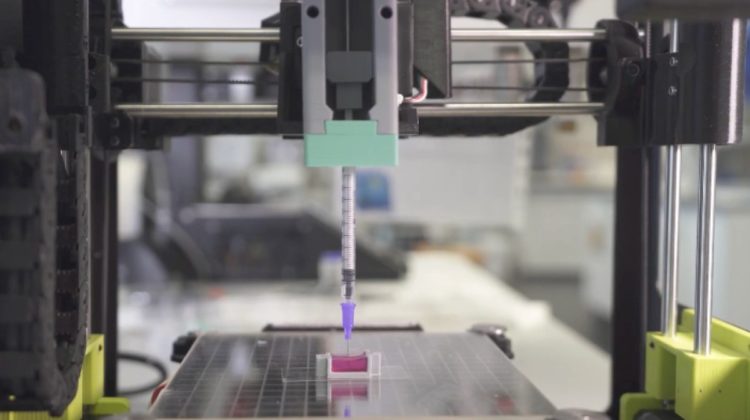
3D-PRINTING INNOVATION
3D printers are increasingly becoming a permanent fixture in the Healthtech field with these innovations
3D Printing is seeing the widest applications in the medical field. It was about a couple of months ago that I wrote about a novel 3D-printing technique, which will enhance the production of biomedical parts. On previous occasions, I have written about other such endeavors — 3D printing of Living Skin, Mini-Livers, and biomimetic tongue to name a few. Scientists have gotten better at utilizing cutting edge tools to enhance the use of this futuristic tech in the Healthcare field.
According to the research conducted by a team of scientists at the University of New South Wales, Sydney (Australia) has developed a ceramic-based ink that may allow surgeons in the future to 3D-print bone parts complete with living cells that could be used to repair damaged bone tissue. This cell-containing gel, in the future, can 3D-print right into the injury, where it would then harden.
Although the concept of 3D-printing bone-mimicking structures is nothing new that hasn’t been done before, the previous methods involved putting experimental materials in the cavity where the bone is missing. The living cells from the adjacent bone tissue would then gradually migrate into this micro-structured scaffolding.
“I imagine a day where a patient needing a bone graft can walk into a clinic where the anatomical structure of their bone is imaged, translated to a 3D printer, and directly printed into the cavity with their own cells.”
~ Prof. Kristopher Kilian. Study Lead
However, with the new method, this is the first time that this kind of material can be created without any harsh chemicals or radiation, at room temperature, and most importantly with the living cells. Researchers believe this new futuristic tech can closely mimic bone tissue. Also, it is a faster alternative to previous techniques being employed.
The novel ink used in the process is a calcium phosphate-based “bio-ink” gel that already contains the patient’s own live bone cells. Dubbed as the Ceramic Omnidirectional Bioprinting In Cell-Suspensions (COBICS), it involves 3D-printing the non-toxic gel directly onto the patient’s bone deficit.
Interacting with bodily fluids, the gel hardens to form a bone-like material, in a matter of minutes. The material consists of mechanically interlocked bone mineral nanocrystals. The living cells within the bone-like solid material then start to reproduce — eventually replacing it with natural living bone.
Animal trials are being planned in the near future to verify this claim. Although the research is in the very early stages of development, keen interest from surgeons and medical technology manufacturers is being shown. The research presents a revolutionary way of treating and repairing bone tissue in the future.
Complete Research was published in the Journal of Advanced Functional Materials.
